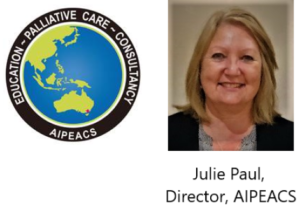
日本語訳 監修 木下佳代子 ジェックス参与
-
皆さんは、COVID 19に罹らずに安全に過ごせたという条件の下で、素敵なクリスマスとハッピーニューイヤーを過ごされたことでしょう。
COVID 19のワクチン開発に少し希望を持ちながら2022年を迎えますが、今年も少し不安な年が続くと思います。私たちの周りにある程度の不確実性がある一方で、2022年の始まりにあたり今年のプロフェッショナルな目標を確立することが重要です。 そうすることで、自己学習の方向性が定まり、2022年の終わりには、達成したことにチェックを入れていくことで、達成感を味わうことができるはずです。
前述したように、患者さんへのケアと同様に自分自身へのケアを確実にするために、自分自身のセルフケア目標も含めることを忘れないでください。 もしあなたの目標が緩和ケアのトピックに関連するものであれば、毎月の更新の中で議論する手助けをしますので、私にお知らせください。
-
今年の始まりに、Journal of Pain and Symptom Managementに掲載された「Cross Country Comparison of Expert Assessments of the Quality of Death and Dying 2021」レポートを是非読んでみてください。 その目的は、各国の専門家の評価に基づいて、終末期ケアの質について、プリファレンスベースのスコアリング・アルゴリズムを用いて、スコア、グレード、ランク付けを行うことでした。 その結果、参加した81カ国において、特に高所得国とそれ以外の国の間で、終末期医療の質に対する評価に大きな差があることが明らかになりました。
-
報告書の全文はこちらでご覧いただけます:https://www.jpsmjournal.com/article/S0885-3924(21)00673-4/fulltext .
-
報告書内の図3は、81カ国のランキングを棒グラフにしたものです。 上位6カ国は、イギリス、アイルランド、台湾、オーストラリア、韓国、コスタリカであり、日本は24位である。
-
上位の国々の終末期モデルや、質の高い終末期医療の実現に向けた自国の進捗に影響を与えた要因について、各国の専門家の意見を確認することで、私たちも何らかの学びが得られるのではないでしょうか。
読みやすくするために、有効な要因と無効な要因を以下に記載しました。 これは、現在のモデルを比較し、改善の機会を検討するのに役立つと思われます。 また、どの分野に取り組むことが重要だと思われるかをお聞かせいただければ幸いです。
実現可能な要因は以下の通り:
– EoL(End of Life=終末期)における健康関連の深刻な苦しみを軽減するための、オピオイドやその他の必須医薬品への中断のない十分なアクセス。
– 国レベルでの、エビデンスに基づく公平な緩和ケアに関する政策と投資。
– 個別化、患者中心、統合されたケア提供。
– 地域・在宅サービスを含む緩和・終末期医療サービスの無料または低料金での利用を保証する公的資金による国民皆保険の資格の法制化。
– 医療サービスの質基準を確保するための制度化された規制および政府の監督。
– 生命を脅かす疾患を持つ患者を管理する資格を持つ、高度に熟練した集学的医療チームを生み出すための、臨床医および医療関連専門家に対する能力に基づいた緩和ケア教育およびトレーニングの義務 づけ。
– 公共と民間、社会と医療サービスの間の橋渡しをする、交差的で多部門にまたがるアプローチ。
– 終末期医療に関連するトピックについて、市民社会の認識を高め、関与を支援するための公的教育。
– 患者とその家族の生活の質を向上させるために、正式な EoL ケアサービスを補うものとする思いやりのあるコミュニティの推進。これには、一般介護者のための訓練と支援が含まれる。
– 緩和ケアの発展に必要なエビデンスを生み出すための研究」
https://www.jpsmjournal.com/article/S0885-3924(21)00673-4/fulltext
EOLケアに否定的な要因として特定されたのは、以下の通りです:
– 終末期医療が人権であるとの認識の欠如
– 緩和ケアに関する国家戦略がない/国家レベルで緩和ケアを優先していない。
– 緩和ケアが広範な医療制度に制限がある、または統合されていない。
終末期医療への投資不足により、人材不足(緩和ケア専門医の不足)、オピオイドの入手不足、終末期患者専用施設の不足、在宅緩和ケア・社会心理的ケアの利用がない、または限定的である。
– ジェネラリストまたは専門家による緩和ケアのトレーニングの欠如。
– EOLケアにかかる高い費用。
– 緩和ケアサービスの利用可能性に関する一般市民の知識・認識の不足
– 終末期医療の選択肢について、患者・家族とのコミュニケーションが不十分または限定的である。
– EoLを決定するための患者の自律性の欠如。
– 死と終末期=dyingに関連する文化的要因の認識不足」
https://www.jpsmjournal.com/article/S0885-3924(21)00673-4/fulltext
もし、追加情報が必要な分野があれば、julie@palliativeeducation.com までリクエスト(英語または日本語)を転送していただければ、確実に議論いたします。
緩和ケアに関するご意見やご経験を共有し、お互いに学び続けることができればと思いますので、ご様子をお聞かせください。
来月のキャッチアップを楽しみにしています。 お元気で, ジュリーより
[事務局より]
ジュリーさんは、皆様からの感想、質問などをお待ちしています。
-
Disclaimer: January 2022 免責条項:
Australian International Palliative Education and Consultancy Services (AIPEACS) は、Julie’s Corner シリーズ内の内容につき正確な情報の提供に細心の注意を注いでいますが、特にある事柄についての専門的意見を提供するものではありません。このシリーズに含まれる情報は、独立した専門家の見解に取って代るものではありません。また、医療上の助言として利用したり、何らかの疾患の治療、手当、又は、予防のために使用されるものではありません。
AIPEACSは、このシリーズにより提供される情報の利用、依存によるいかなる法的責任、怪我、紛失、損害については、責任は負いません 。
Australian International Palliative Education and Consultancy Services Pty. Ltd -
Julie’s Update: January 2022 (原文)
-
I hope you have all had a lovely Christmas and Happy New Year within the parameters of being save with COVID 19.
As we enter into 2022 with a little more hope with the development of vaccines for COVID 19, we know that this year will continue to be a little uncertain.
Whilst there is a degree of uncertainity around us it is still important to establish our professional goals for this year at the start of 2022. This will give us a sense of direction for our self directed learnings and hopefully a sense of achievement towards the end of 2022, as we begin to tick off what we have achieved.
As discussed previously don’t forget to include a self care goal for yourself to ensure your care for yourself as well as you care for your patients. If your goals relate to palliative care topics please let me know so I can assist with discussions within the monthly updates.
To start this year off I would encourage you to read the Cross Country Comparison of Expert Assessments of the Quality of Death and Dying 2021 report published in the Journal of Pain and Symptom Management. The aim was to score, grade and rank countries on the quality of end of life care based on assessments from country experts using a preference based scoring algorithm. The results demonstrated the significant differences in assessment of quality of end of life care across the 81 countries who participated especially between highest income countries and others.
The full report can be found here: rhttps://www.jpsmjournal.com/article/S0885-3924(21)00673-4/fulltext . Within the report Figure 3 provides a bar graph of the rankings of the 81 countries. For interest the top ranking six countries were United Kingdom, Ireland, Taiwan, Australia, Koren Rep and Costa Rice with Japan ranking at 24.
There may be some learnings for us in reviewing the end of life models in the higher peforming countries as well as the Country experts opinions on factors that were enabling and disabling in influencing their countries progress towards achieving high-quality EOL care.
For ease of reading I have included the enabling and disabling factors below. This may help you to compare your current models to review for opportunities for improvement. I would be interested to hear which areas you think are important to work on.
Enabling factors included:
- ● “Uninterrupted and adequate access to opioids and other essential medicines to alleviate serious health-related suffering at the EoL.
- ● Evidence-based and equity-oriented policies on and investments in palliative care at the national level.
- ● Personalized, patient-centered, and integrated care delivery.
- ● Legislated entitlement to publicly financed universal health coverage that ensures free or low-cost access to palliative and EOL services, including community, and home-based services.
- ● Institutionalized regulatory mechanisms and government oversight to ensure quality standards.
- ● Mandatory competency-based palliative care education and training for clinicians and allied health professionals to generate highly skilled multidisciplinary healthcare teams qualified to manage patients with life limiting illnesses.
- ● Intersectional and multisectoral approaches that bridge boundaries between public and private entities, and social and health services.
- ● Public education to promote awareness on and support civil society engagement on topics related to EOL.
- ● Promotion of compassionate communities that complement formal EoL care services to improve quality of life of patients and their families. This includes training and support for lay caregivers.
- ● Research opportunities and activities to generate necessary evidence for palliative care development.” https://www.jpsmjournal.com/article/S0885-3924(21)00673-4/fulltext
- Factors identified as contributing negatively to EOL care include:
- ● “Lack of a recognition that EOL care is a human right
- ● Absence of a national strategy for palliative care/not making palliative care a priority at the national level.
- ● Limited or no integration of palliative care into the broader health system,
- ● Lack of investment in EOL care leading to human resource shortages (i.e., lack of palliative care specialists), shortfalls in access to opioids, lack of dedicated facilities for patients at EOL, and no or limited access to home-based palliative and psychosocial care,
- ● Lack of generalist or specialist palliative care training.
- ● High cost of EOL care.
- ● Lack of public knowledge and awareness of availability palliative care services
- ● Poor or limited communication with patients and families on EOL care options
- ● Lack of patient autonomy to make EoL decisions.
- ● Lack of recognition of cultural factors associated with death and dying ” https://www.jpsmjournal.com/article/S0885-3924(21)00673-4/fulltext
-
If you have any particular areas you would like additional information on, please forward your request (either in English or Japanese) to julie@palliativeeducation.com
-
and we will ensure that this is discussed.
Please let me know how you are going as we would enjoy sharing your thoughts and experiences on palliative care, so that we can continue to learn from each other.
I am looking forward to our next month’s catch up.
- Take care,
Julie
